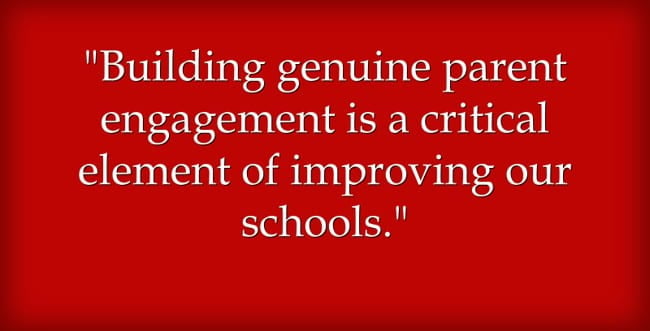I’m republishing about fifteen-or-twenty columns/articles I wrote for various publications like ASCD and The Washington Post over twelve years ago, but which are no longer available on their websites. I still think they have some relevance today. I’ll add links to these posts to the page where links to all my articles are located.
This 2011 column originally appeared in The Washington Post. Fortunately, the Parent Trigger is effectively dead these days as more and more people recognized its destructiveness, but this article’s warnings about its dangers can be applied to other school reform strategies today.
Building genuine parent engagement is a critical element of improving our schools. Two way “conversation” and not the all too common one-way “communication” between schools and parents needs to be developed through strategies like teacher home visits to build relationships and working together to address the two-thirds of outside school factors that affect student achievement ( health care, affordable housing, neighborhood safety).
The so-called “parent trigger” law in California, which lets a majority of parents (from a school or from their “feeder” schools) sign a petition to force a school to be converted into a charter, is not one of those genuine parent engagement strategies. The recent effort to apply this law for the first time in Compton highlights all the reasons why it is an unwise strategy for students, families, teachers, and administrators.
When organizers are interested in helping community residents build leadership skills, develop genuine ownership of the group they are creating, and leave a lasting organization for the long-term, they do not work “under the radar” as the Parent Revolution (the group behind the law) organizers did in Compton (their first contact with school officials apparently occurred when the petitions were delivered).
Organizers with the primary goals of leadership development, resident ownership, and creating a long-term organization operate under the assumption that problems exist for one of three reasons: because decision-makers don’t know the problem is there and need to be told; they know the problems exist but don’t know what to do about them; or they know what they are and don’t want to make the change because there is a competing interest stopping them . The job of real organizing is clear on all three – tell them, give them ideas, and/or create an equal or greater amount of pressure to get them to do the right thing.
This kind of process, which is not staff-intensive (unlike the eight paid staff who worked on the Parent Revolution Compton campaign), has an organizer working with residents to learn which one of those reasons is accurate. Out of this process, residents will learn who their allies and opponents genuinely are – publicly. This kind of public organizing can also include connecting with other local institutions in the area – religious congregations, neighborhood groups, small business associations – all of whom also have a vested interest in these issues and with whom many residents are also connected.
The “parent trigger” law, however, does not provide any incentive to either schools or parents to engage together in this kind of organizing. It encourages a polarizing strategy of “us” versus “them.” As is happening in Compton, it is also pitting parents against other parents as many are now withdrawing their signatures from the petition . Finally, it provides a huge incentive to charter school operators to parachute into communities and engage in what community organizers call “slash and burn” organizing
When unions organize in a hostile workplace, it’s essential to work “under the radar.” Retribution from employers can be swift and traumatic – people can lose their jobs and be “blackballed” from getting jobs in other companies. It requires a large number of staff to contact workers one-on-one in locations other than the workplace, and, if successful, union dues will allow a high staff level over the long-term. The union’s self-interest is to organize the workers – they have no interest in creating a union-owned and operated company to compete with the one they are trying to organize. Unions were not begun, nor led, by leaders of groups that want to start competitive companies (the chair of Parent Revolution’s board is the head of charter operator Green Dot Schools). They are also not funded by groups that want to do so (Parent Revolution’s primary funders are the same ones who are the biggest funders of charter schools).
Genuine parent engagement with schools will not happen with the attitude of Parent Revolution, whose website video says The only way to change [schools] is to give power to the only people who only care about children — parents.
The better way to improve schools is to develop a partnership between parents, teachers, and administrators, and to have all share power. Power is not a finite resource – the more it is shared, the more possibilities are created.
I’m republishing about fifteen-or-twenty columns/articles I wrote for various publications like ASCD and The Washington Post over twelve years ago, but which are no longer available on their websites. I still think they have some relevance today. I’ll add links to these posts to the page where links to all my articles are located. This school reform Larry Ferlazzo’s Websites of the Day…






